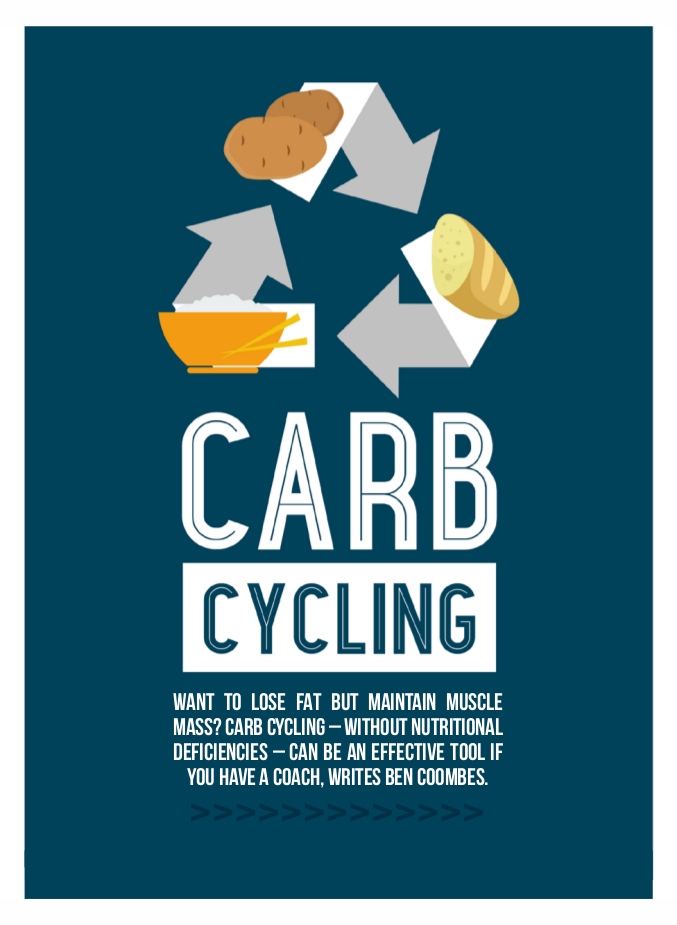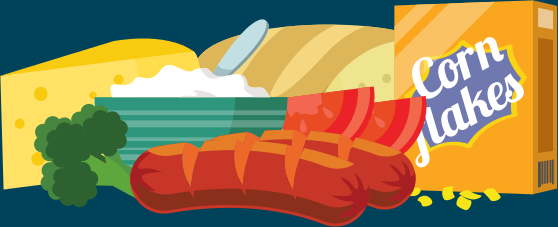BESTFIT Issue 15 – Carb Cycling
BESTFIT Issue 15 – Carb Cycling
Share
 Weight loss is quite easy provided you are in a generally good state of health. all you need to do is ensure that your calorie balance is negative (i.e eat fewer calories than your body requires for maintenance) over a given period, typically one to three days.
Weight loss is quite easy provided you are in a generally good state of health. all you need to do is ensure that your calorie balance is negative (i.e eat fewer calories than your body requires for maintenance) over a given period, typically one to three days.
Maintaining muscle mass, optimal health and sanity, however, is a little more difficult.
An athlete (that’s you) needs to ensure enough protein is consumed to maintain as positive a nitrogen balance as possible. Nitrogen balance (the comparison between nitrogen consumed mostly via protein and nitrogen excreted via urine etc.) is used as a proxy measurement of muscle gain or loss, and it’s pretty well established that a positive or neutral nitrogen balance indicates muscle gain or at least retention.
Essentially we consume nitrogen in the protein that we eat and a lot of that is stored in muscle tissue. We also constantly ‘turn over’ muscle tissue in our body, releasing nitrogen for excretion.
When excretion exceeds intake, we have a problem.
A second issue one may encounter when trying to lose fat is known as adaptive thermogenesis. This term describes one of the ways in which your body responds to low-calorie dieting: During a dieting phase, in essence, your metabolic rate slows down. It does this for a number of reasons, and a lot of it is accounted for by the fact that you are now carrying a lot less weight around with you, but around 10% of it is not. This is caused by adaptations your body makes in order to try to halt your weight loss (annoying I know) as this is seen by your system as a thread to survival.
One commonly used method to overcome both of these phenomena is carbohydrate cycling, a process which involves reducing carb intake for a set period, and then increasing them again for another period. It sounds complex but is actually quite simple.
“A second issue one may encounter when trying to lose fat is known as adaptive thermogenesis”
 You could say this means per week that you have 1,260g carbs to play with. If I’m working with someone I may therefore say that on three resting days, the client will have 100g carbs, meaning that on training days they are able to have 240g to fuel performance.
You could say this means per week that you have 1,260g carbs to play with. If I’m working with someone I may therefore say that on three resting days, the client will have 100g carbs, meaning that on training days they are able to have 240g to fuel performance.
“the carb intake on ‘low’ days almost always still allows for a lot of vegetables”
Another positive here is that it can make a diet more interesting and therefore easier to stick to. An athlete may find on some days they can eat a lot of breads, rice, cereal, pasta and other delicious carb-based foods while on other days sausages, cheese and nut butters are on the menu – if a typical high carb or fat approach is taken with no variation, these things can become cravings and on a typical moderate approach the portion sizes of both need to be carefully considered, but a carb cycle allows the best of both worlds.
Finally, unlike other more extreme version of carb cycling, the carb intake on ‘low’ days almost always still allows for a lot of vegetables, meaning that this method doesn’t cause any of the nutritional deficiencies that can be experienced with harsher regimes.
When it comes to carb cycling I tend to view it as a tool which can be implemented if needed. If an athlete is looking to lose fat or maintain weight whilst improving performance I like carb cycling in a weekly fashion, but
only when a need arises – generally most people can diet without any change day to day.
I do this because a higher carb intake prior to training days (or on training days for clients who train in the evening, meaning they can ‘fuel up’ during the day) might increase performance a little – but I think it’s important that this is communicated to my clients so they aren’t under the impression that carbs are ‘bad’ or ‘fattening’, or that they will inhibit fat loss in some way. As always, I recommend that you don’t do this by yourself for the first time, though. If you think you need to implement carb cycling at any point, get yourself a coach. It’s never a bad investment.
“An athlete may find on some days they can eat a lot of breads, rice, cereal, pasta and other delicious carb-based foods while on other days sausages, cheese and nut butters are on the menu”














FOLLOW BESTFIT